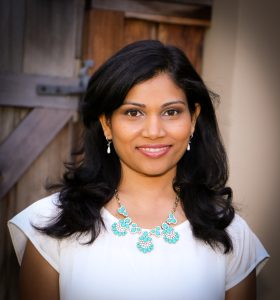Sunanda Kommula, Founding Engineer, Selector Analytics, plays a key role to help innovate and disrupt the Network Analytics industry. Here’s what she’s about.

What would you describe as your most memorable achievement?
A standout moment in my time at Selector has been my involvement in leading a network observability solution for a prominent telecommunications company, responsible for delivering reliable cable TV to millions of subscribers through their IP network.
This opportunity provided me with an immersive understanding of the intricate network layers involved in resolving incidents and offered invaluable insights into crafting a monitoring solution from the ground up. Our solution enabled the customer to benefit from comprehensive real-time monitoring of their entire service.
This project marked a significant milestone for Selector by securing a substantial purchase order from the client—among our most substantial at that time and my contributions played a pivotal role.
Observing my career journey complete its cycle and recognizing that every bit of knowledge and experience I gained served a purpose, has made this accomplishment remarkably gratifying and unforgettable.
What first made you think of a career in technology?
Computer networking stood out as my favorite subject in college and I found myself engrossed by the intricate systems and protocols that facilitated seamless communication across the globe. I was Drawn towards its innovative nature, as the realm of networking presented new challenges and prospects that held genuine real-world consequences. Fueled by my passion for innovation and problem-solving, I’ve chosen to pursue a career in networking.
What style of management philosophy do you employ with your current position?
I believe in creating a team of skilled professionals who reflect qualities such as humility, respect, integrity and consistency. I’m dedicated to nurturing an inclusive work atmosphere where compassion and empathy take precedence, acknowledging that we all navigate both successes and hurdles. My approach involves empowering team members to be independent while offering guidance and support, fostering their capability to proactively adDress challenges and thereby excel in a demanding business landscape.
What do you think is the current hot technology talking point?
Certainly, Large Language Models (LLMs) have brought attention back to Artificial Intelligence and Natural Language Processing, with virtually every industry striving to integrate LLMs into their products and operations.
AIOps systems equipped with LLMs can analyze vast amounts of data, including logs, reports, tickets, and documentation, to extract valuable insights and patterns related to network issues, user behavior and operational trends. They can better understand and categorize alerts, helping IT teams prioritize and respond to critical issues faster.
How do you deal with stress and unwind outside the office?
Art is a major part of my leisure time; I enjoy painting and experimenting with colors and mediums. I like to visit museums and galleries to appreciate art from different time periods, while photography lets me capture joyful moments to share with loved ones. I enjoy traveling, immersing in diverse cultures, foods and sights.
If you could go back and change one career decision what would it be?
In the earlier stages of my career, I believed that venturing into people-management might dilute my technical knowledge, a depth I aimed to maintain across all facets of my field. Looking back, I now regret not embracing people-management sooner. During that period, I held the misconception that such a shift would demand sacrificing my technical expertise. In hindsight, I’ve come to realize that it was entirely feasible to traverse both paths concurrently while maintaining a strong technical foundation.
This realization highlights how technical expertise and people-management complement each other, a lesson I’ve learned from my own professional experience.
What do you currently identify as the major areas of investment in your industry?
AIOps is in its early stages of harnessing the potential for automating network operations. Despite network operators’ extensive knowledge of network architectures, the immense velocity, volume and variety of data generated by sizable customer networks exceed human capacity. The ramifications of even slight human errors, such as misconfigurations or oversights, can cascade across thousands of network elements, potentially isolating large areas from global connectivity.
While traditional troubleshooting might require hours or days, machines can be trained to swiftly identify patterns, anomalies, and correlate events. Their speed and accuracy are notably superior. In line with other domains, AIOps research necessitates close collaboration with networking experts to devise algorithms customized for adDressing network anomalies. This involves providing predictive analytics and root cause analysis capabilities, ultimately elevating the efficiency and dependability of network operations – an investment of significant value.
What are the region-specific challenges when implementing new technologies in North America?
Implementing AIOps in sectors like finance, healthcare, and government requires adherence to various industry-specific regulations, which can be complex and resource-intensive.
Integrating AIOps capabilities into existing legacy IT systems in North American organizations can be challenging, requiring significant efforts in data normalization and system compatibility.
Additionally, AIOps implementation may encounter cultural resistance within organizations, especially among IT teams accustomed to traditional methods, making it a hurdle to convince stakeholders to embrace AI-Driven automation and decision-making.
What changes to your job role have you seen in the last year and how do you see these developing in the next 12 months?
Over the past year, I’ve observed a notable transformation in our customers’ preferences and requests. There’s been a significant shift towards embracing and demanding enhanced AI and ML capabilities for network operations. This transition involves moving beyond a mere observability solution and actively integrating AI functionalities into our platform.
In the upcoming year, our dedication lies in synergizing AI algorithms with networking solutions across all layers, spanning from the physical layer to application layers.
This entails deciphering intricate routing protocols while catering to the diverse array of network functions in existence.
What advice would you offer somebody aspiring to obtain a C-level position in your industry?
To pursue a C-level position in the tech industry, begin by becoming a proficient expert in the technology you are passionate about. Constantly seek learning opportunities to stay current with the latest trends.
Demonstrate leadership by taking initiatives to guide and mentor others. Sharing your knowledge not only propels you forward but also contributes to building new innovations. Focus on refining your communication skills, enhancing both presentation abilities and written correspondence.
Prioritize user experience in your technology ventures. Embrace change and consistently seek feedback to enhance your product. This customer-centric approach will set you apart.
Finally, remember that the journey to a C-level position requires continuous growth, dedication, and a commitment to innovation.
Click below to share this article

